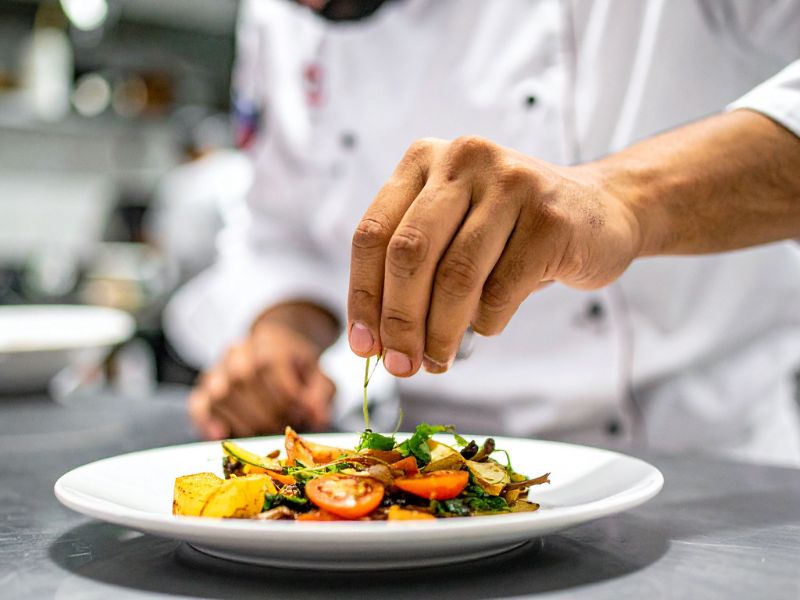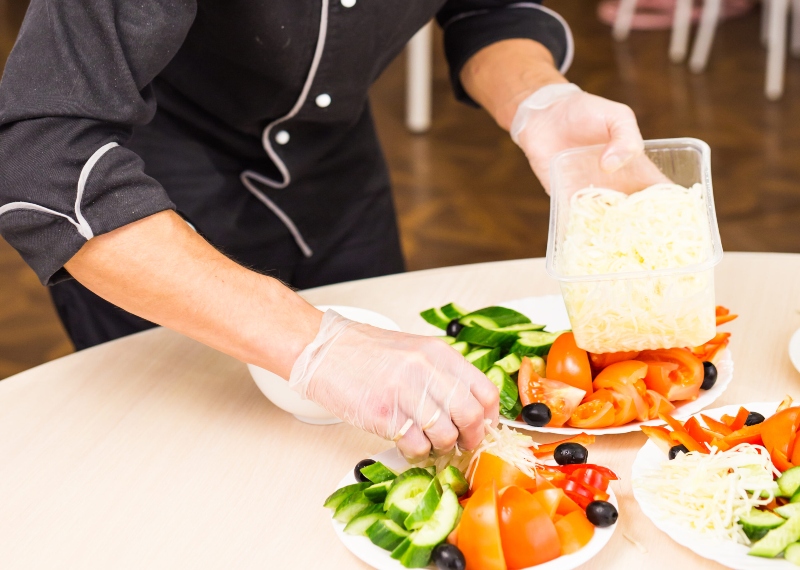According to the RAE, “food” refers to the “set of substances that living beings eat or drink to subsist.” But did you know that food has its own roadmap within the supply chain? In this article, we explain what food traceability is, as well as its importance in the kitchen.
What is food traceability
From the producer to the final consumer, food or food products are traced from their beginning to their end. In this way, food traceability is understood as the way in which we track all the steps of a food, from its origin to its arrival at the final consumer, going through the production, transformation and distribution processes. Transport, storage or sale would also be included within this concept. In the case of a restaurant, from the origin of the raw material to the dish that a diner enjoys.
In this way, it is a fundamental system to control all types of risks that affect the supply chain.
At Araven, we promote the hospitality sector, working hand in hand with professional kitchens. We develop products such as those specialized in food preservation, which also guarantee excellent operation and compliance with regulations.
Why is this traceability important?
As we say, food traceability is fundamental to establish a system that preserves food safety. The greater the control of food at its different stages of the chain, the lower the probability of risks.
Likewise, with food traceability we achieve greater transparency, information for the consumer, which also allows us to guarantee the quality of the food itself.
Legislation on food traceability
Traceability and food safety are two terms that go hand in hand. Hence, legislation arises to regulate them. In this sense, with regard to legislation on food traceability, it is worth noting Regulation (EC) 178/2002 of the European Parliament and of the Council on general requirements for food law within the European Union.
The objective? To guarantee an optimal level of protection of food safety and, therefore, of public health.
Thus, this regulation encompasses each link in the supply chain: from farmers and ranchers; to producers, distributors or transporters. Likewise, both the European Union itself and the state in question participate fully. The former, when managing food quality and safety standards, while the state is the body responsible for ensuring that agents comply with European regulations.
Types of food traceability
There are different types of traceability in the hospitality sector. We divide them into the following groups:
Forward traceability
As its name suggests, forward food traceability or downward traceability applies to products that are prepared to leave the company, either in shipping or delivery to the customer. In this way, in this type of traceability we obtain very valuable information, such as the name of the customer to whom it is sent, the product delivered, the time of delivery, as well as the date of sale.
Indeed, this helps us to identify the batches, what food they contain, on what dates they have been delivered and, of course, to which recipient they have arrived.
Hence, if a food alert is detected, it is very easy to locate the batches in poor condition. See which restaurant they have arrived at for a prompt withdrawal of the product.
Backward traceability
Backward traceability or upward traceability is just the opposite of the previous one. It allows us to know the food products that enter a company. Indeed, it is the traceability in the kitchen par excellence. And it helps us to know what raw materials, jars… have been introduced into our restaurant’s warehouse, as well as their suppliers.
In this regard, data such as the product’s expiration date, quantities, its geographical origin, the supplier, the reception date or even the storage location or the treatments to which it has been subjected, among others, are recorded.
Again, in the event of an alert – in the case of a kitchen, an intoxication in a dish -, thanks to this type of food traceability, we can see which is the contaminated ingredient, as well as its own supplier. And from there, take the pertinent measures.
Internal traceability
And finally, it should be noted that in hospitality there is also internal traceability. It consists of collecting information on the products received at the restaurant (data with day and time of handling, expiration dates, etc.), as well as the final products – or dishes – that are served to customers.
From the process points to the batches of products made; through the registration of raw materials used or operations carried out during elaboration or storage… all of this is taken into account.
For example, in a restaurant, information on the external raw materials with which we prepare any type of dish is collected. In the case of an elaboration such as a salad, we will analyze where these vegetables and greens came from, what processes are carried out for their handling until plating. Without a doubt, it is essential to record all this information.
How to improve food traceability in a hospitality business?
The importance of food traceability is clear. It is fundamental for your hospitality business! At Araven, we are leaders in food safety in the hospitality sector, we promote innovation and sustainability in professional kitchens.
And we have integrated labels in all our Gastronorm airtight containers, IML labels that allow a complete description of the product to be included; identifying the content, updating it or adding information as essential as its origin. Discover them in our online catalog!
Here are some ideas for improving food traceability in your hospitality business:
- Staff training. Without a trained team, we do nothing. This is the first rule in food traceability. Your staff must know the importance of this action, as well as the systems used in your business.
- Labeling. On the other hand, it is essential to have a labeling system, which allows us to record essential information such as the supplier, the expiration and reception date or the lot number itself.
- Communication with suppliers. It is important to maintain fluid communication with your suppliers, this guarantees us quality and traceability in their products.
- Storage system. Food storage must be optimal. Therefore, aspects such as the location or temperature of the product must be taken into account.
- Inventory control. Without inventory control of our warehouse, traceability is null. It is essential: both for the management of losses and returns.
- Digitization of processes. Digitization must also be introduced in restaurants. There are specialized software that streamline all types of tasks: from inventory control to the elaboration of the recipes themselves. All this facilitates product tracking.Audits. Finally, carrying out periodic audits, both internal and external, is interesting to ensure successful product traceability.




